Disclosure: Meeple Mountain received a free copy of this product in exchange for an honest, unbiased review. This review is not intended to be an endorsement.
I went to my first BGG Con last November, and got to play a bunch of great games. At the time, one of the only copies of Ark Nova in the US was in the “Hot Games” room, and there were always lines queued up with gamers waiting to try it out.
On one of my visits to Hot Games, a seat opened up for another import getting a lot of buzz: Gutenberg (a game we included in our most anticipated games of Essen 2022 list), designed by Katarzyna Cioch and Wojciech Wisniewski, and published by Granna (Portal Games in the US). It didn’t look like I was going to ever crest the mountain of Ark Nova traffic so I sat down with two other gentlemen to give Gutenberg a spin.
Fast forward to the present. From my very first play to now, I’m surprised to say that I’m in the exact same place I was when I first played Gutenberg: meh.

It’s Not the Production’s Fault
Let’s start with the best part of Gutenberg: it’s a fantastic physical production.
Any conversation about Gutenberg has to start with the wooden type pieces: small square typefaces that represent the 4 letters used during gameplay, A, I, O, and U. The pieces essentially pull off what it might look like if you used a real typeface to print an inked letter on a piece of paper, with the letter appearing to be backwards.
Those pieces are great, and most other things about the components shine, especially for a standard retail copy of a game. The player boards have a nice weight to them and allow for 3 turning gears to be placed on the board. Trackers are cut into the player boards so that cubes comfortably rest in each of the board’s 5 tracks. Little ink tokens get their own high-quality bag, albeit a bag that I wish fit better for my very large hands.
Six different tuckboxes hold most of the game’s components, so storage is a snap. The cards are delightful because they are slimmer than most cards I’ve seen used in games: about an inch wide and maybe 3-4 inches long, but easy to shuffle despite the strange dimensions. The money is cardboard (i.e. garbage, at least to me), but I don’t fault anyone here. I’m a gaming snob, so the second I saw the game’s included cash, I whipped out the poker chips (Iron Clays are a great way to improve your gaming experience) to ensure players at my table were satisfied.
For a game that retails for about $60, I am pretty happy with the look and feel. The problems arise when a game of Gutenberg begins.
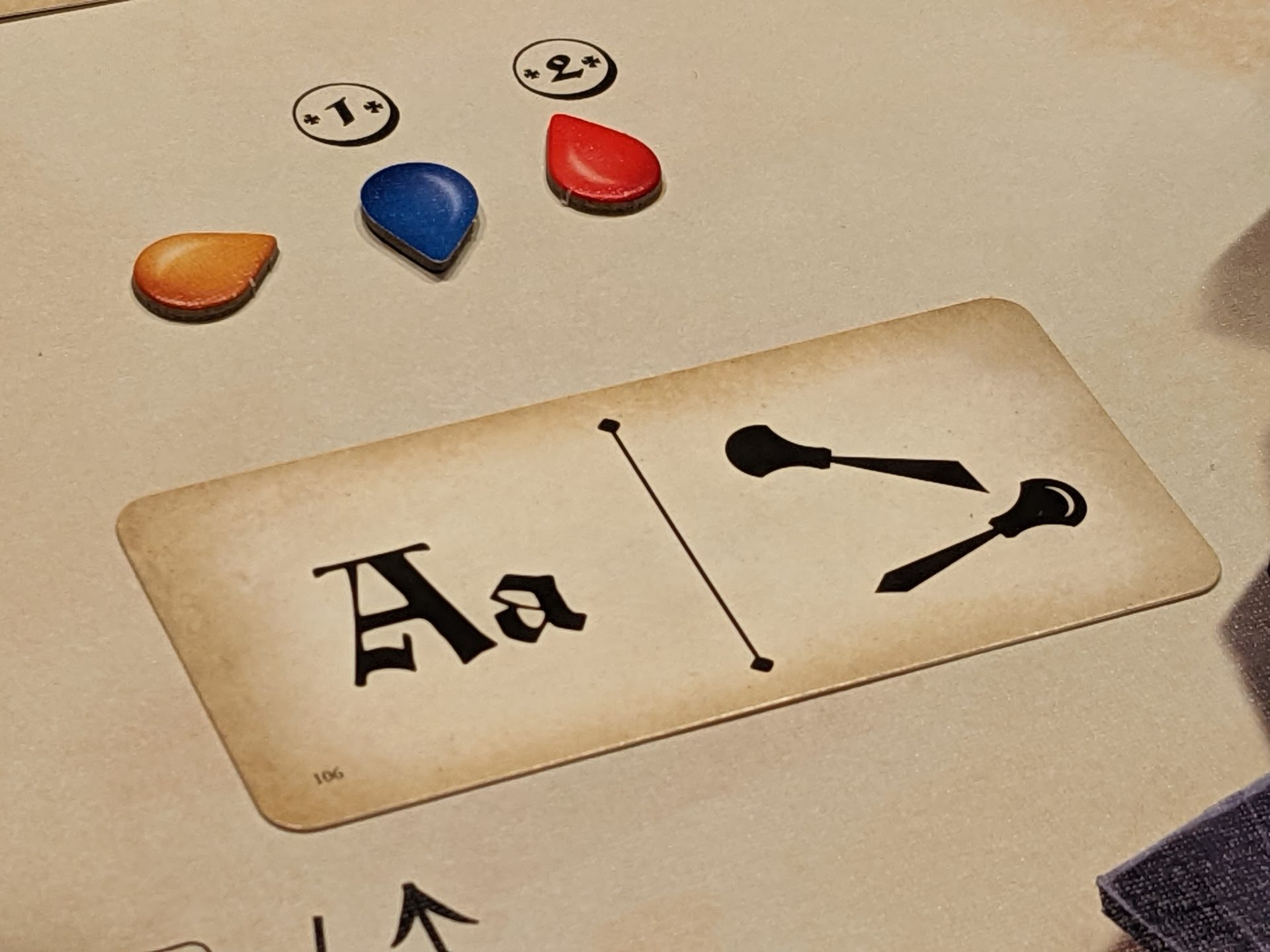
Ahh, the 1400s Were Something Else
I appreciate the rulebook for Gutenberg, because it provides a backstory for why you are playing a game about typefaces in the first place.
Also, it sounds like the real-life Johannes Gutenberg was quite the ideas man. Money was a struggle, but the ideas were there!
Once that backstory is provided, the game mostly throws the theme out the window. Players assume the roles of printing pioneers, in this case one of 10 included historical figures which grant a power during play. Then you’ll spend 6 rounds, with 5 phases per round, attempting to gain “fame points” which will determine the victor.
Rounds in Gutenberg are easy to execute; Gutenberg is very approachable for both core and casual players alike. Most of your time each round is consumed by 2 phases: Plan and Execute Actions.
The Plan step takes place behind a player screen. Using an “initiative board”—the game’s parlance for programming—players will take a certain number of cubes to spread out across the 5 available actions, such as taking new contract/order cards, gathering ink, and taking gears which are used to set up free actions each round.
The trick with the Plan step: the first player only has 7 of these cubes to spread across 5 actions. Each player in turn order has one more cube than the last, so a 4th player has 10 cubes in total. (In the case of a programming action tie, the first player wins ties.)
This programming step is a chance to create some real juice, some real excitement. Occasionally, it does. However, in my experience, the Plan phase quickly becomes rote.
That’s because in the first half of the game, players need more orders, gears and ink tokens; late in a game of Gutenberg, players will need cards that boost their standing on the specialty tracks on their player board, or to grab one of the precious milestone cards (known here as “Patronage” cards).

This means that the drama from the Plan step often comes from trying to guess what your opponents will load up on late in a game, and in rounds 4-6, that’s usually a Patronage card because each is worth 8 points at the end of the game. That makes this step important as a race, but if a player can’t meet the milestone’s requirements, they won’t be in competition for that Patronage card anyway.
The Execute Actions step is very straightforward. Now that programming is finalized, players take each of the board’s 5 actions in order, based on who placed more cubes in each action on their initiative board.
Because everyone is chasing different requirements for their orders—and orders form the main way to score points in Gutenberg—I have found that I can usually get something that I need in a round from the board to help.
This also leads to a lot of clean-up as players take cards and inks off the board. It’s a nice system, but I must address something here: there’s a decent amount of reshuffling required in Gutenberg because the Develop Specialities and order decks are a little thin. The biggest offender: the 4-card automa item selection “deck”, which isn’t even big enough to survive more than a SINGLE ACTION without a reshuffle.
Yes, every time the solo bot player has to choose something to remove from the board, you’ll have to reshuffle a 4-card deck. 30 times in a game.
This is ridiculous. I have colleagues here at Meeple Mountain that won’t even play games if they have to reshuffle cards that often. I resorted to rolling a D4 die during my solo plays of Gutenberg to avoid shuffling cards over and over again.
Scoring each round mostly happens during the Fulfill Orders step. Using the typeface wooden block tokens you acquired during setup (you’ll get 3 to start the game) and those you have purchased during gameplay, you’ll match up types with inks and your current specialty track standing to fulfill orders and score points. You’ll also get some cash which can be used to buy more types and ink in later rounds to keep the fame point river flowing.
End game scoring is also a snap, since most points are scored during each round. Adding in 8 points for each Patronage card, a point for every 3 guilders (cash), and any points earned from tracks on your player board will round out your score.

Drama Free in (14)93
My main issue with Gutenberg: I wish it were more interactive.
I’ll give you an example. As long as each player puts at least one initiative cube into each action, they are guaranteed to be able to take that action. There is not a chance of missing out altogether on anything, but you might not get your first, or even your second, choice of gears, orders, etc.
So, even if you don’t do anything except elect to take the Develop Specialties action, you are guaranteed to move up 12 times on various tracks. Combining this with just a couple of other actions, you could max out at least one of your 4 specialty tracks on your player board to score end-game points.
In terms of direct interaction, that was never on offer, but I’d still like to have a shot at slowing another player down. “Hate drafting” is a bit of a bust in Gutenberg. You will struggle to find ways to block other players. While that makes it nice for a player who does not want any disruption on their path to glory, it also means you might experience a runaway leader problem that literally can’t be blocked.
In my first 4-player game of Gutenberg, the winning player scored about 140 points, and the next closest player was at 89. And it wasn’t even that close; by the end of round 4, we were just playing out the string.
Player powers in Gutenberg really range, and they are the only thing that brings any level of variety to the proceedings. I played my first game without the powers (the instructions lead players to leave out powers for a beginner game), but I would not recommend this. The game needs the powers to feel interesting.
But even with the powers, our plays have been a mixed bag. Some powers feel objectively better than others: starting the game with 2 gears (i.e., free bonuses right out of the gates), or being able to trigger the same gear power twice in a round. I saw a player use the latter power to great effect in the game where he scored those 140 points.
Some powers are best if the player count is lower; I found the Gutenberg character power to be a great idea (you can move a single initiative cube after everyone completes the Plan step), but in a 4-player game, it’s almost impossible to get ahead of all players to go first for an action.
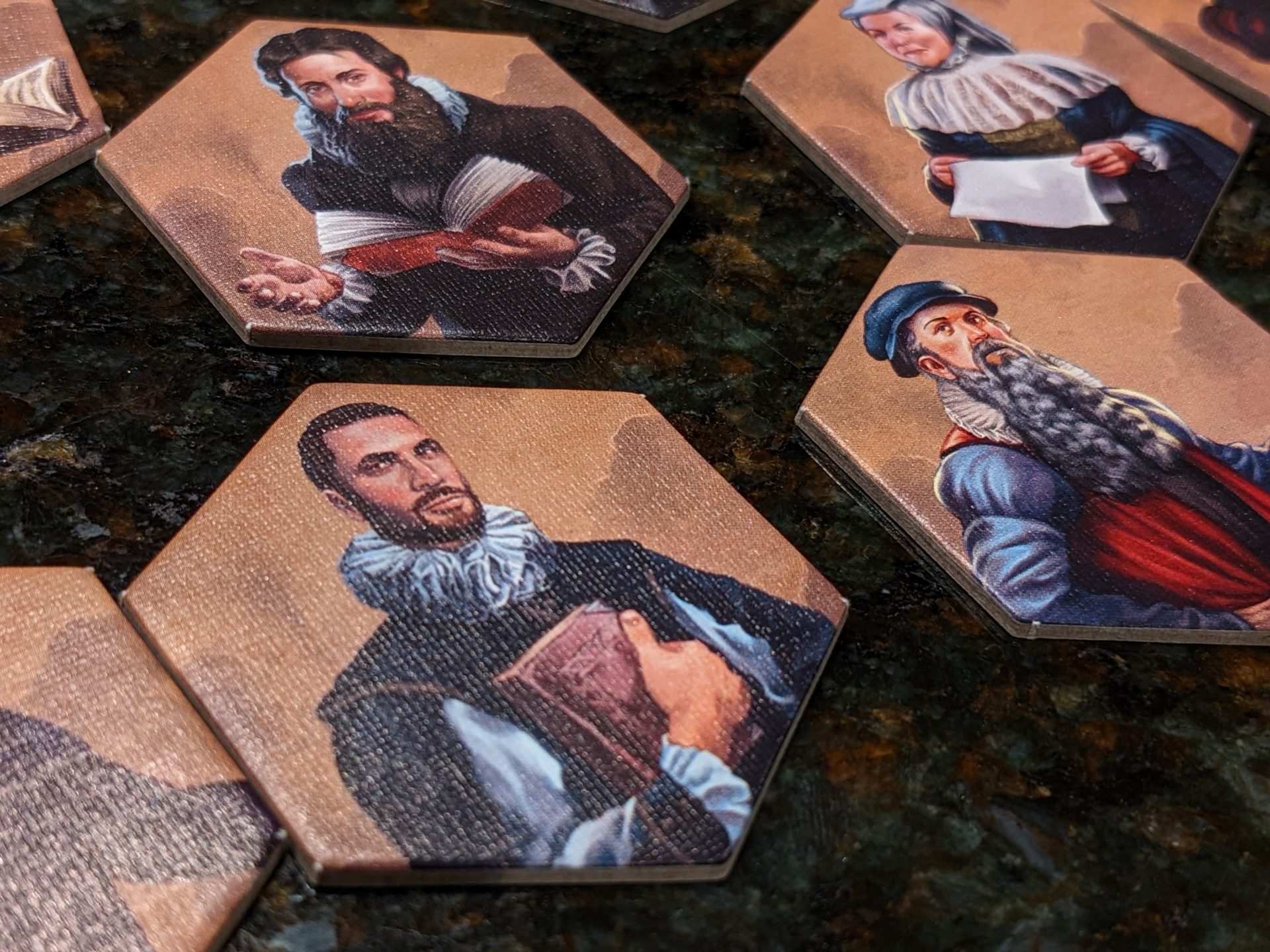
The Print Isn’t Always Fine
The biggest barrier for my ability to recommend Gutenberg: at no point during any of my plays did I have a “wow” moment.
Gutenberg is fine. It’s never terrible, but it is also never crazy good fun. I certainly recommend playing Gutenberg to enjoy its strong production values, well-written rules, and a solo game which does a decent job of teaching players how to approach the core loop of gathering orders and fulfilling optional requirements to score the most points. (Note that the game’s automa is built to boost your player count as well, so it can be used in a 3-human game to give you a bot as the 4th player.)
But I would leave Gutenberg in the “play it, don’t buy it” category. Despite its great looks, Gutenberg never resonated with the gamers who joined me at the table. The mid-weight Euro category is spectacularly, absurdly overcrowded, and Gutenberg struggles to break away from the pack.


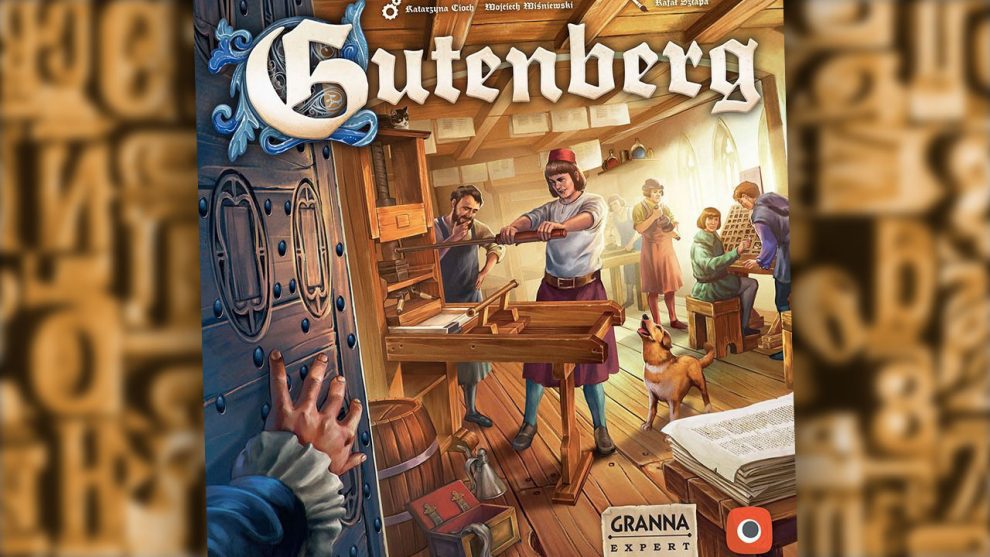

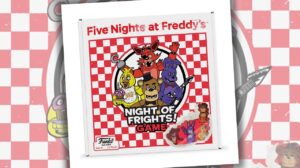
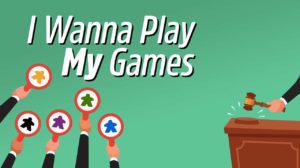






Add Comment